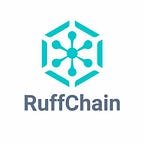Ruff Chain: Realize Deep Integration of Blockchain with IoT
The decentralized and distributed characteristics of blockchain share similar commonality with the distributed characteristics of IoT. According to a report issued by IBM, IoT may be the best application scenario of blockchain technology.
Among the current blockchain projects in the IoT field, the most famous one is IOTA. As a well-known thousand-times currency, its present price has soared by some 5000 times over its original crowd-funding price 15 years ago. Then, as a bottom-layer distributed operating system, what new differences has Ruff Chain brought to IoT?
Ruff Chain is an architecture integrating IoT with blockchains, composed of a distributed operating system and an open main china. The core issues to be addressed by Ruff Chain are the trusted interoperability and paid interoperability among IoT equipment and devices in different systems, for, at present, IoT is a separated and closed system.
Then, how can Ruff Chain realize trusted interoperability among IoT equipment and devices of various brands?
Firstly, each smart device has an address, which is written into the hardware by the supplier when sold, with the two-dimensional code for this address private key put in the hardware package box. Through acquiring the private key, the control center sends a binding instruction (with this private key signature) to the device and gains entire control of this hardware. After binding, the control center may delete the private key of the device and only needs to save the private key of control center itself.
In such a way, all the equipment and devices in the IoT can be controlled point to point, namely, the control center operates the device by sending a control TX with its own signature to the device. Besides, control can be achieved based on chain status. When the control end can not establish point-to-point connection with the device, the control end may consume some tokens and write a “Status Change” TX into the chain or “Control Command” TX to operate the target device. The target device may directly synchronize the status or control command through the chain, or synchronize the status or control command through a trusted light node (e.g. a bridge device). The blockchain has addressed the issues of cloud operation and maintenance costs and stability after all equipment and devices are connected to the cloud.
Lastly, all the IoT node devices are automatically controlled, with no need for the use of contract to set up the logic of “shutting down the air conditioner when the air temperature is below 15 degrees”. These automatic control logics can be realized at the control end (an app) with the traditional development language, reducing the hardware costs needed for devices’ support of contract and also decreasing the possibility of main chain crash due to contract operation.
In addition to the utilization of blockchain technology to realize trusted interoperability among IoT devices, Ruff Chain also offers time sequence data, consensus mechanism and lightning-chain-like-based negative review mechanism.
● Time Sequence Data: Most IoT data are time sequences, with natural bonds with blockchains. Data affixed with time stamps can, by themselves, prevent replay attacks and avoid dead locks due to concurrency. These data are not effectively integrated in previously separated centralized networks to address the final consistency of data in flow. In scenarios common to us, such as product source tracing, data are often repeatedly input into centralized systems like ERP, MES and WMS in product manufacture, storage and circulation, and the consistency of those links is totally un-guaranteed. Edge calculation nodes in Ruff Chain take synchronized time stamps as the core, for controlling the business logic within the LAN. Within the entire blockchain network, time stamps are synchronized, and, by tracing the behavior of all network nodes at one moment, the status of network at that moment can be restored.
● Consensus Mechanism: Considering the computing capacity of IoT main control equipment, we choose DPoS as the consensus algorithm. Based on this algorithm, token holders in the entire network can select block producers through the voting system; once selected, anyone can participate in block production.
● Lightning-chain-like-based Negative Review Mechanism: A control node can create a fixed-format contract at the main chain through a TX: CreateContract. Common contract contents include: “If you give me certain tokens, I’ll allow you to use the following command on condition that …”. After a contract is successfully created, the height of block saving the contract and the hash of that TX (collectively, Contract Addr) will be returned.
Ruff Chain can strongly withstand replay attacks in terms of privacy and security, since the local ad hoc network of Ruff Chain is decentralized. Once any fault occurs at a main application node in a local application network, the application logic will drift to another node to continue completion so as to guarantee the consistency of local application network.
The security of IoT itself is guaranteed by OS itself. Ruff Chain adopts symmetric keys, and keys are not transmitted in the network. Besides, the chain network releases time-stamp-based one-time tokens to the application network, so as to withstand replay attacks.
In future, Ruff Chain will be a brand new IoT-based underlying architecture platform, characterized by decentralization, development, open source and high efficiency. In ecosystem, different participants may provide resources to acquire token returns or consume tokens to acquire resources and share resources to form an economically-driven autonomy.
Click to know more about Ruff Chain ⤵️
Website: RuffChain.com
Twitter: https://twitter.com/Ruff_Chain
Facebook: https://www.facebook.com/RuffChainProject/
GitHub https://github.com/RuffNotes/RuffChain
